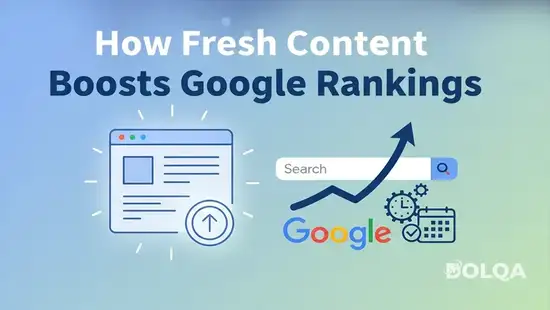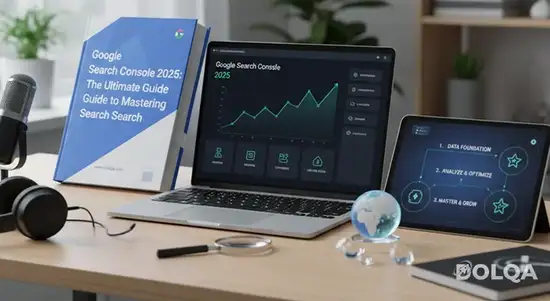Introduction
If you’ve ever wondered why some web pages jump in Google rankings after just a minor update, you’re seeing the power of fresh content at work. In the SEO world, content freshness (or fresh content SEO) is a frequently cited factor in Google’s ranking algorithm. But many site owners and content creators are unsure:
How exactly does Google treat fresh vs. stale content?
Which Google ranking factors care about freshness?
What is the practical process to keep content fresh, update old content, and integrate it into your SEO content strategy?
In this guide, I’ll take you step by step through understanding content freshness, how it influences Google rankings, and how to build an ongoing system to maintain fresh content that supports your SEO goals. (Beginners welcome—no assumed prior mastery.)
1. Understanding Core Concepts
1.1 What “Fresh Content SEO” Means
Fresh content SEO refers to optimizing for content that is recently published or newly updated, with the understanding that search engines may favor more recent information for certain queries.
It’s not just about writing new articles—it also includes revisiting, refreshing, or expanding existing pages (i.e. “update old content”).
1.2 Why Content Freshness Matters (In Theory)
Google has publicly and implicitly acknowledged that timeliness can be a signal in ranking, especially for queries where up-to-date information is important (e.g. news, technology, health, events). Google’s patent literature and internal signals often refer to tracking “dates” (e.g. byline dates, URL dates, on-page temporal references) and measuring recency. Leaked internal documents suggest that Google uses features like bylineDate, syntacticDate (dates in URLs or meta data), and semanticDate (temporal expressions in page text) as part of freshness evaluation.
In addition, content updates can send signals of ongoing maintenance, relevance, and user satisfaction (if the updates lead to better user behavior). Some of the Google document leak analysis reveals Google considers “freshness” as a factor, especially in dynamic subject domains.
However, freshness is not a universal override. It’s one of many signals (among 200+ ranking factors) and tends to play more importance in specific topics and queries.
1.3 Google Ranking Factors and Where Freshness Fits
Google does not publish an official “freshness score,” but rather combines many ranking signals. Some major categories of ranking factors include:
On-page content quality and relevance
Search intent alignment
Backlinks and domain/site authority
Technical SEO (site speed, mobile usability, crawlability)
User experience & engagement signals
Temporal / freshness signals (for queries that benefit from more current data)
So, fresh content becomes more relevant when a query is time-sensitive or when Google believes recency is part of user expectation.
2. Step-by-Step: How Fresh Content Influences Rankings
Below is a clear process that shows how updating or creating fresh content can influence your Google rankings (for applicable queries).
Step 1: Identify Pages That May Benefit from Freshness
Not all content benefits equally from freshness. Start by auditing your content and looking for:
Pages that formerly ranked well but have lost positions
Articles about time-sensitive topics (e.g. guides, tech, news, trends, product reviews)
Content with outdated facts, statistics, broken links, or missing new developments
Posts with traffic decline or high bounce rates
“Evergreen” pages with regular small updates (e.g. “best tools 2023 → 2025”)
Use Google Analytics and Google Search Console to find pages where impressions or positions have dropped. Also check queries where the top results show recent publish dates—that’s a signal Google favors freshness.
Step 2: Plan the Update Strategy (SEO Content Strategy Component)
Before you dive into updating, plan:
Define objectives
Are you trying to regain rankings?
Do you want to expand topic coverage, improve user experience, or add new data?
Is the goal boosting CTR, dwell time, or conversions?
Research competitor pages
Look at pages currently ranking at the top: how recent are they, how long, what structure, what depth?
Identify gaps (statistical updates, new subtopics, recent developments) that your update can fill.
Map your updates
What sections to add, remove, or rewrite
What new keywords or related queries (LSI) to include
What fresh data, charts, quotes, or sources to incorporate
Internal links or schema updates
Decide whether to refresh or republish
Refresh (update date, content additions) often suffices
Republish (new slug, new date) may be useful in rare cases, but be cautious—Google may treat it as a new URL
Step 3: Execute the Update with Best Practices
When updating content, follow these best practices:
Update the date prominently (if your design shows publish/updated date)
Add new sections or insights rather than only cosmetic edits
Fix or remove outdated content, broken links, or irrelevant info
Cite new, authoritative sources
Improve readability, layout, and internal linking
Check for technical issues (e.g. images, schema, canonical tags)
Ensure you preserve existing URL and link equity, if not republishing
Add or refresh metadata (title, meta description) to reflect the updated content
Use internal links to connect your updated content to relevant pages
Test the user experience (UX) so the updated page loads fast, is mobile-friendly, readable
Step 4: Signal Google to Re-crawl / Re-index
Once the updated content is live:
In Google Search Console, use the URL Inspection tool to request a recrawl
Submit or update your XML sitemap with the revised URL
Ensure the page is reachable through internal linking and is not blocked from crawling
Optionally share the update via your social media, newsletters, or internal site activity (to attract external signals)
Step 5: Monitor Results & Iterate
After an update, keep an eye on performance over time:
Watch ranking changes for target keywords
Monitor organic traffic and impressions from Search Console
Observe click-through rates (CTR) and user engagement metrics (time on page, bounce)
Compare pre-update and post-update stats
If results are underwhelming after a few weeks, consider further revision or deeper expansion
If the page improves, retention, you can schedule periodic re-reviews in your editorial calendar.
3. Practical Tips, Tools & Software
3.1 Tools to Assist Fresh Content SEO
Google Search Console & Analytics – to track keywords, traffic, and impressions
Screaming Frog / Sitebulb / DeepCrawl – to audit pages, detect broken links, missing metadata
Ahrefs / SEMrush / Moz – to analyze competitor content, keyword gaps, backlink profiles
Surfer SEO / Clearscope / MarketMuse – to get content suggestions based on top-performing pages
Content calendars / editorial tools – to schedule updates and track content lifecycles
Version control or change history logging – to keep track of how content evolves over time
Ranking trackers – to see how keyword positions shift post-update
3.2 Basic Requirements & Considerations
Your website must allow Googlebot to access and index the content
Use canonical tags correctly (avoid duplicate or conflicting versions)
Ensure your site loads quickly (page speed optimization) and is mobile-friendly
Maintain overall site authority through backlinking and internal linking
Make sure updated content continues to align with searcher intent and topic relevance
3.3 Recommendations & Tips
Refresh priority pages first (higher traffic, strategic importance)
Avoid too-frequent minor changes (don’t republish daily small edits)—you want meaningful updates
Add “What's new” or “Recent updates” sections so readers and search engines see freshness
Use structured data (schema) where relevant (e.g. news articles, FAQs)
Combine updates with promotional efforts (share new content) to drive traffic, links, and signals
Maintain an update cadence (e.g. quarterly review) for top pages
Don’t ignore older content—some of your most valuable SEO gains often come from refreshing content that already has authority
4. Common Pitfalls & Misconceptions
| Pitfall / Misconception | Why it’s problematic | Suggested solution |
|---|---|---|
| Believing freshness always outranks quality | Fresh content with weak quality won’t outrank better content | Focus first on content quality, then freshness |
| Republishing with a new URL blindly | You might lose existing rankings and backlinks | Prefer updating in-place unless a major restructure is warranted |
| Overdoing updates with no real value | Risk of being seen as superficial / not helpful | Add meaningful, value-adding content, not fluff |
| Ignoring queries where freshness is irrelevant | Not all topics benefit from frequent updates | Classify which pages benefit from freshness and which don’t |
| Not signaling Google to re-crawl | Google might not notice the update quickly | Use GSC, sitemaps, internal linking, social sharing |
| Neglecting technical, UX, or site performance issues | Even with fresh content, poor UX can hurt rankings | Always ensure the rest of SEO (technical, speed) is solid |
5. Sample Workflow: Updating an Article
Here’s a hypothetical workflow you can adapt:
Select a target: Old article “2022 SEO Trends” ranking has dropped
Audit: Identify outdated stats, missing 2024 developments, broken links
Benchmark: Check competitor “SEO Trends 2025” pages—length, topics, recency
Plan additions: New trends, data, case studies, tools, visuals
Make updates: Insert new sections, update stats, add sources, adjust headings
Refresh metadata: Title: “SEO Trends 2025 & Beyond (Updated)”
Update in CMS without changing the URL
Request indexing via Search Console
Promote the refresh via newsletter or social media
Monitor keyword positions and traffic over next 4–8 weeks
Iterate further if needed (deeper rewrite, richer content)
6. When Freshness Matters More (and When It Doesn’t)
6.1 Queries Highly Sensitive to Freshness
News, events, current affairs
Fast-evolving industries: tech, finance, health, laws/regulations
Product reviews, version comparisons
Trends, forecasts, year-based “best of” lists
For such queries, Google often prefers very recent content (within months, weeks, or even days).
6.2 Queries Less Sensitive to Freshness
Evergreen content (e.g. “how to boil water,” “grammar rules”)
Historical or classical topics
Foundational concepts that change little over time
Here, freshness may only play a minor role; content quality, authority, depth, and relevance dominate.
7. Integrating Fresh Content into Your SEO Strategy
Content calendar: schedule periodic reviews (quarterly, semiannual) for top pages
Tier your pages: identify which pages are always fresh, occasionally fresh, or mostly static
Combine updates with canonical strategy to manage versions
Track before/after metrics to gauge effectiveness
Use topic clusters: when refreshing one page, coordinate updates across related pages
Invest in expertise & data: adding new research, insights, quotes or proprietary content enhances freshness impact
Pair with link-building & social signals: refreshed content can attract new links, improving authority
Conclusion
Fresh content is a powerful lever in SEO—but it’s not a magic switch. When thoughtfully applied, backed by high-quality improvements, and aligned with Google ranking factors, content freshness can help renew or boost rankings, especially for time-sensitive topics.







Comments (0)
Leave a Comment
No comments yet. Be the first to comment!